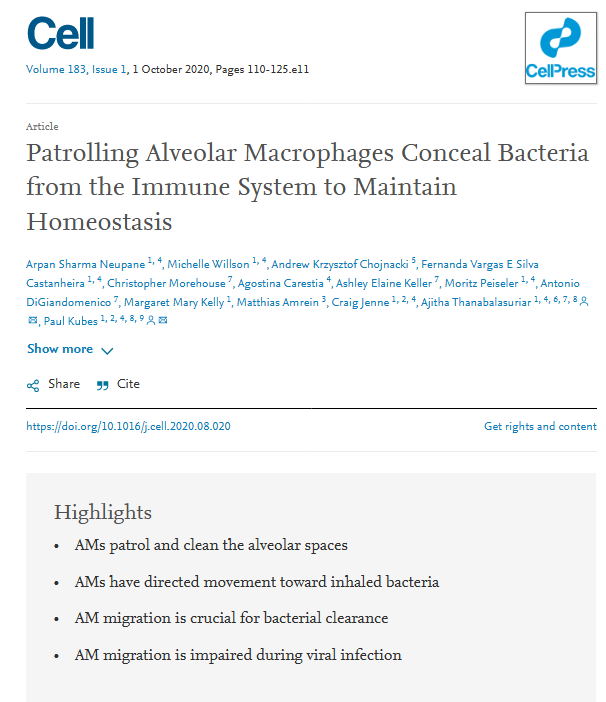02.11.2020
Patrolling Alveolar Macrophages Conceal Bacteria from the Immune System to Maintain Homeostasis
Cell, 2020
Abstract
During respiration, humans breathe in more than 10,000 liters of non-sterile air daily, allowing some pathogens access to alveoli. Interestingly, alveoli outnumber alveolar macrophages (AMs), which favors alveoli devoid of AMs. If AMs, like most tissue macrophages, are sessile, then this numerical advantage would be exploited by pathogens unless neutrophils from the blood stream intervened. However, this would translate to omnipresent persistent inflammation. Developing in vivo real-time intravital imaging of alveoli revealed AMs crawling in and between alveoli using the pores of Kohn. Importantly, these macrophages sensed, chemotaxed, and, with high efficiency, phagocytosed inhaled bacterial pathogens such as P. aeruginosa and S. aureus, cloaking the bacteria from neutrophils. Impairing AM chemotaxis toward bacteria induced superfluous neutrophil recruitment, leading to inappropriate inflammation and injury. In a disease context, influenza A virus infection impaired AM crawling via the type II interferon signaling pathway, and this greatly increased secondary bacterial co-infection.
Using Bio X Cell’s anti-Mouse IFNγ antibody (Clone: XMG1.2), they discovered that infection with respiratory viruses such as flu or COVID-19 paralyzes macrophages through the type II interferon signaling pathway, paving the way for potentially deadly secondary bacterial infections.Further more, Bio X Cell’s anti-Mouse LFA-1α antibody (Clone M17/4), was used to demonstrate that LFA-1 is necessary for AMs to crawl on the surface of alveoli.


